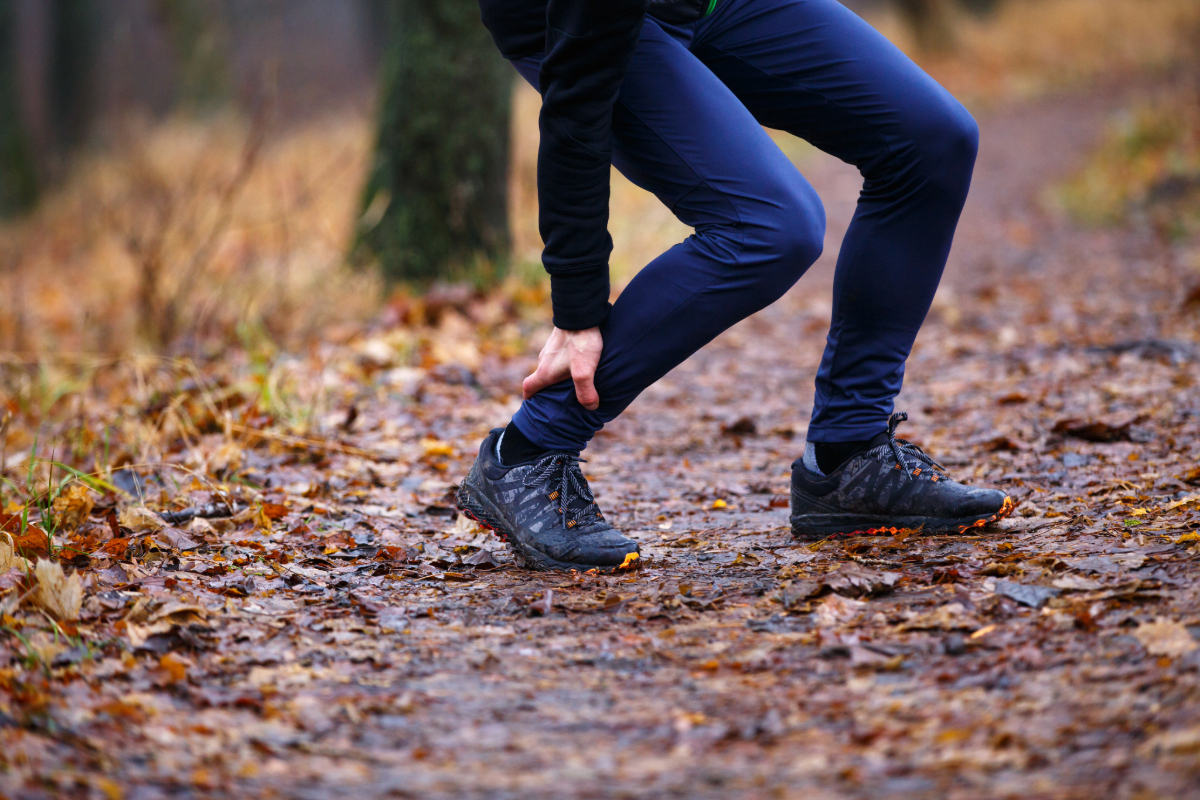
After gearing up in the early morning, you get into your car and you start driving – further and further away from the city you’re so accustomed to seeing. The grays and browns of the concrete buildings gradually give way to the beautiful colors of nature – greens in the summer, and gold and red in the fall. You turn onto a gravel road leading you further from civilization.
As rocks and dust kick up behind the wheels of your car, you grow anxious and excited to get away from it all and hit the trail. After parking, you do a quick warm-up and head up the path that’s more like a deer trail than anything else. Hopping along, dodging rocks and logs in your path, you feel as light and quick as a sure-footed rabbit. As you leap over a large log lying across the trail, you come down on a loose rock and roll your ankle, spraining it.
Ouch. Now you have to make it back to your car. As you start making your way back, you start to wonder whether this was it for the season and whether you could’ve avoided spraining your ankle.
The answer is yes and no. No person can prevent and avoid every single injury. However, there are ways to avoid many trail running injuries, particularly those caused by accidents.
1. Be Sure-Footed, But Watch It Too
If you’re a regular road runner then hitting the trails will breathe new life into your daily run. There’s nothing like getting away from the human footprint left by roads and technology and finding freedom in nature. But, if you’re not a regular trail runner, you could be heading into trouble if you don’t watch your footing.
Most runners think they can take on just about anything, but that loose rock your foot lands on will teach you quickly that you’re not invincible. While you may be accustomed to looking straight ahead instead of at your feet, it’s important to look at where you place your feet on the trails. With logs to jump over, rocks to climb, and mud to run through, the last thing you want to do is slip and fall because you’re not watching your feet.
This doesn’t mean looking straight at your feet. Rather, you should be looking down and ahead of where your feet are going to land to ensure that you find strong footing and clear ground to land on.
2. Slow It Down
Switching up your running routes and heading to the trails will give you new motivation and excitement. This usually means having more energy in your running and faster pace. However, now is more important than ever to keep a slower pace than usual. Jumping over logs and climbing rocks will zap more energy from you than when you run on a road with no obstacles. You’ll need to save your energy and pace yourself so that you don’t tire too quickly.
Fatigue leads to injury, so pacing yourself will avoid fatigue and costly mistakes like tripping or losing your footing. Furthermore, slowing it down will allow you to watch your footing more carefully and make the necessary adjustments quickly if you find yourself in a precarious position.
3. Wear Proper Gear
We’re not recommending getting $200 shoes or high-tech gear. However, running on the trails requires not only a different mindset and training approach but also a gear change. A wider shoe base, a deeper tread, and more supportive arches and insoles will give you more support on uneven terrain. Trail shoes are also generally heavier and are designed to support and protect your feet from rocks and sticks.
You may also want to consider wearing long sleeves and capris or pants. Clothes that cover more of your body will protect you from scrapes and bug bites.
4. Cross-Training Properly
Most runners know how important cross-training is to performance and preventing injuries. Many road runners may use trail running as a form of cross-training. However, don’t let the trails fool you. You still need to cross-train for running on trails because it uses different muscles. The uneven terrain also presents challenges that your body needs to be trained to avoid accidents and injuries. Such exercises that incorporate balance and strength are important to incorporate into your workout. Single-leg squats, split squats, and hopping from one foot to the other are all great ways to ensure you’re ready physically to take on the trails.
Most Trail Running Injuries Are Preventable
Not all injuries are preventable but many can be avoided with the right approach. By training properly, watching where you’re going, and wearing the right shoes will prevent mistakes that lead to sprained ankles and worse injuries. Never underestimate the power of strength training, mobility, and balance as well as proper technique in injury prevention. As you head out to the trails either as your regular run or as a cross-training workout, remember to keep safety a priority.
